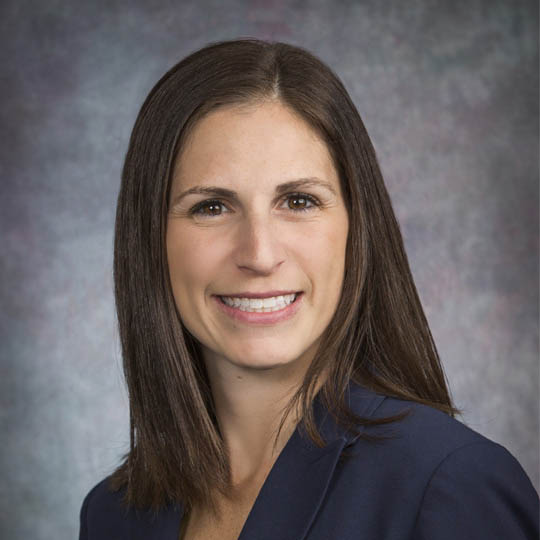St. Luke’s Magic Valley Nurse Embraces New Technology to Manage Diabetes

Erica Sommer was just four years old when she learned she had type 1 diabetes.
“When I was young, I had been diagnosed with multiple urinary tract infections. Everywhere I went, I brought water with me. My mom called the pediatrician and explained that I was drinking a lot of water and eating, but not gaining any weight.”
Sommer and her family got the news about her type 1 diabetes that same day. In type 1 diabetes, which is an auto-immune disease, the pancreas has stopped producing insulin -- the hormone that controls blood-sugar levels.
Growing up, Sommer did “everything that a normal kid would do.” She was a cheerleader, a dancer and a member of the National Honor Society. All the while, she used injections, a glucometer and other measures to manage her diabetes. She made sure to check her blood sugar and insulin regularly.
Today, an adult Sommer is among 26 patients at St. Luke’s Magic Valley using a new closed loop system with a pump and sensor to automatically give the correct amount of insulin in response to food intake and rising blood glucose. The system adjusts insulin based on the blood-sugar reading. Patients are still required to input blood sugars for possible corrections and count carbohydrates and bolus, according to the amount of carbohydrates they are eating.
This new technology, which became available to patients at the end of June, is helping them better manage their diabetes.
“Closed loop is an automatic system that communicates with itself,” said Janet Renaldi, a nurse practitioner with St. Luke’s Magic Valley Diabetes and Endocrinology Clinic. “The sensor monitors glucose levels and uses Bluetooth to communicate with the pump and adjusts insulin settings. Previously, the patient would get the information, and they would then program the insulin pump on how much insulin they should get. With sensors, patients still have to approve this, but it is now more automated.
“With auto mode, the insulin pump with continuous glucose monitor programs the settings every five minutes,” Renaldi said. “It changes the amount of insulin delivered to hit a target of 120 blood glucose. With diabetes, we recommend fasting blood sugars of 80 to 120. Typically, we would say an average of 150 is controlled. Anything higher would lead to adverse side effects.”
“With this new technology, you get more information to be able to make decisions and to determine why someone is having low blood sugars,” Renaldi said. “With injections and blood glucose testing, the details are not there. The data captures a lot more of those details so you can figure out what is going on better.”
Renaldi uses the example of a child with a report card of all Fs. If you have been in the child’s classroom or watched the child doing homework, you have more details to know why that’s happening. It’s the same thing for diabetes.
Sommer hasn’t let her diabetes hold her back. A nurse, she’s worked in the St. Luke’s Cardiopulmonary Unit in Twin Falls since February 2017. Before joining the CPU, she worked in the emergency department and she was part of an emergency medical services team in Las Vegas for 10 years. But her new insulin pump allows her to have “an easier life.” She can eat more freely, for instance.
“Just because you have diabetes, it doesn’t mean your life has to stop. I was told when I was young that I would never be able to have children, but now, I have two wonderful children,” Sommer said. “People ask me, ‘What would you do if they cured diabetes?’ Truthfully, I don’t know. I grew up with type 1 diabetes so this is what I know.
“You can’t let diabetes control your life. Type 1 is an individual disease. There are not two people that can be treated the same.”
And, if you are thinking about using the new technology, she recommends that you “do your research” to see if it’s right for you.
For Sommer, it’s important to have a support system.
“Knowing that my family, friends and co-workers are aware of my diabetes allows me to feel safe. I know that if I am not acting right, I can count on them to help me, if needed,” she said. “I also feel like online support groups are helpful because we all know how the others are feeling. No one will understand what it is like having diabetes, unless you are diagnosed with it.”
About The Author

Michelle Bartlome is the public relations manager at St. Luke's Magic Valley.

